After so many fish, it was time to take on a group of animals that I’m less familiar with…from a set that is either a holy grail for collectors (if they missed it), or a treasured part of the collection (if they didn’t miss it!) It’s a series of salamanders and newts produced by Safari Ltd in association with the Tennessee Aquarium. The series was released in 1995 (plus one last one in 1997), when Safari was really finding its place and created a number of series associated with other well-known institutions (The Carnegie Dinosaurs and Monterey Aquarium series are probably the best known, but there was also the Smithsonian Hidden Kingdoms invertebrates and Baltimore Aquarium dart frogs). Working with the Tennessee Aquarium makes sense–there is a high diversity of salamanders in the southeast United States, and specifically in the Great Smoky Mountains that straddle Tennessee and North Carolina, so an aquarium there would have some experience with this group of animals. Side note, keep the Great Smoky Mountains in mind for the future…!
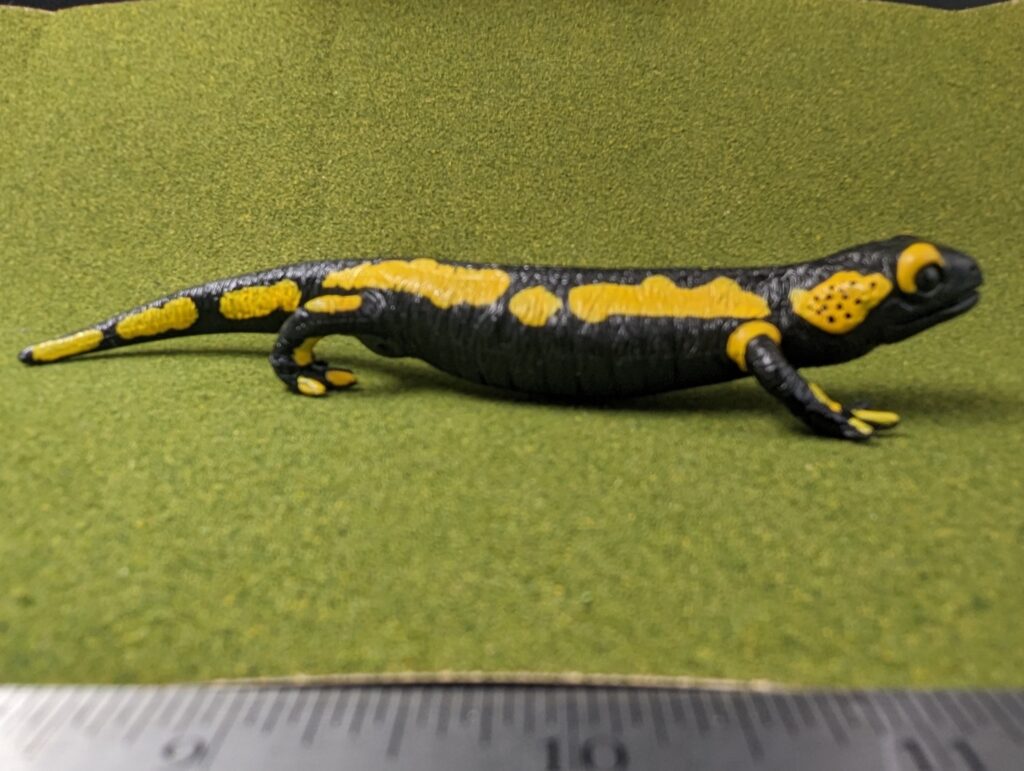
The series was focused more on ‘salamanders’ and produced in association with the Tennessee Aquarium…as opposed to only referencing species from the area, This means that of the seven species in the line, 2 are from Eurasia, but the other five are indeed from Tennessee. As it is, this series still stands out as one of the most diverse series of salamanders and newts, which unfortunately was discontinued in the mid-2000s, and even then was pretty rare to find (I lucked out in 2006 in finding an online store that had at least one of each left). They still appear from time to time, and can command pretty incredible prices for those who know what they have (I saw one recently on auction for $90, and that is probably reasonable now). Some of the molds are still in use–Safari reused them for their glow-in-the-dark and their Translucents series. I will cover each figure on its own, as I think they are deserving of the attention, but at least I won’t need to introduce the series each time!

The first figure in the series is the European fire salamander Salamandra salamandra. As the word ‘European’ implies, this species is not found in Tennessee or North America at all, but instead through much of continental Europe. It’s certainly well-known, and is actually a species that has already found its way to the blog, the recent figure from Schleich. There are surprisingly few figures of the species, given the familiarity, and it’s funny to me that there’s almost 30 years between the release of the Safari figure and the current Schleich (Bullyland released a couple, but they’re more limited in their distribution).
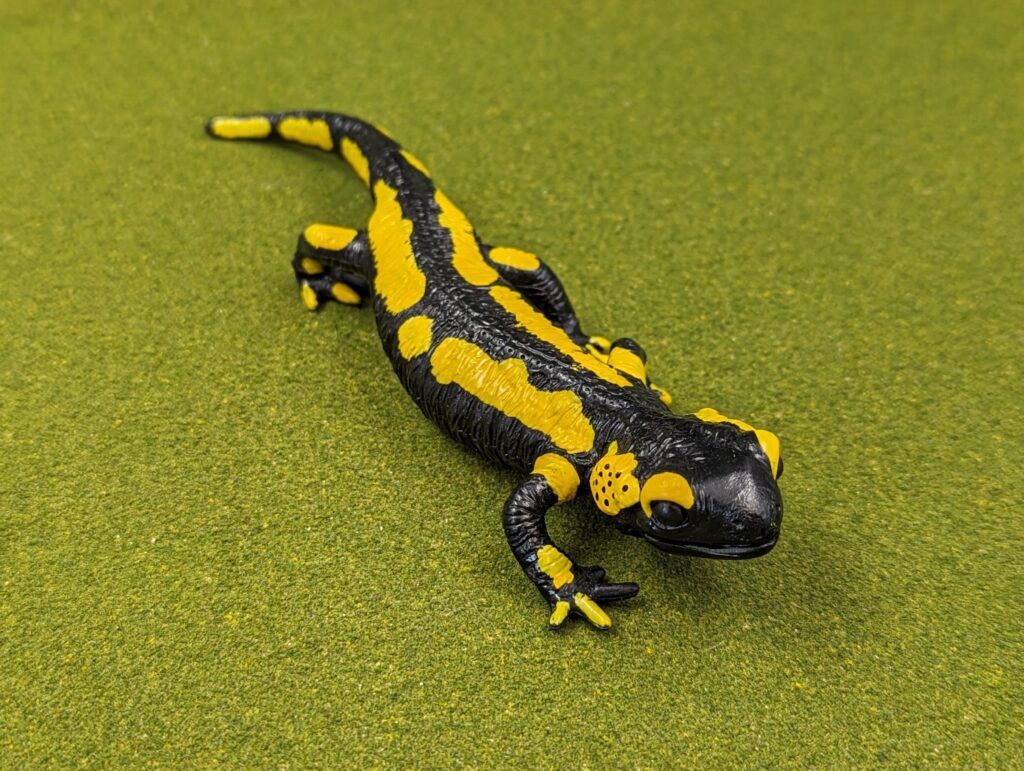
The Safari fire salamander is numerically the first figure in Safari’s series, number 210072 (the figures in the series are identified by the 210#, and each ends with 72. Not sure how that all worked). It is about 18.8 cm long (just around 7.4inches) giving a scale of roughly 1:1 (assuming a real length of 19.5cm, although they can range from 12-30cm). The figures throughout the series are all approximately true to life scale (adult length), give or take some rounding errors. Given the length, this figure probably indicates a male, which are typically shorter in length as well.

The figure itself is sculpted in a raised, walking pose, in a slight s-curve (fairly typical for walking salamanders). The tail is shorter than the body, which is acceptable; it is somewhat laterally compressed, but still rounded enough to be correct. In terms of overall appearance, the figure is certainly realistic. The entire upper surface and sides of the body are textured with numerous thin, shallow folds, reflecting a moist skin on a terrestrial animal. The body is also finished with a shiny gloss finish, again giving the impression of a moist or slimy animal, as is appropriate. The face is also distinctly sculpted, with the nostrils deeply incised and the mouth closed, but with just a little gap showing between the upper and lower jaw. The eyes are wide open and extra shiny, making the figure look like a bright and alert adult. There is also a sculpted cloaca at the base of the, and given how prominent it is this would also indicate a male individual.
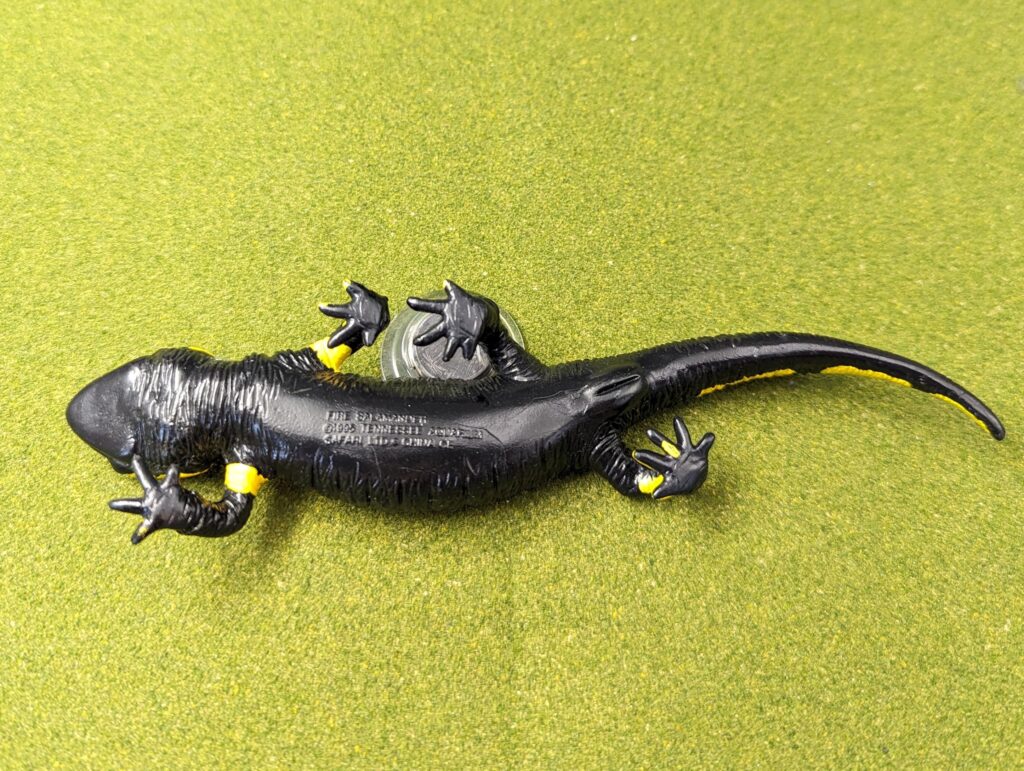
The primary colour is jet black, with bright yellow longitudinal bars down both sides of the back, and along the sides of the laterally-compressed tail. On the legs there are other yellow patches, some on the wrists and shoulders, as well as on the toes. The face sees large yellow patches on the cheeks, speckled with black dots, and yellow patches over each eye. While the base colour of fire salamanders is usually black, the colour patches can range from dull yellow to red or orange, and the presence of the patterns can also vary from heavy blotches to small dots, to almost entirely black.

I could not determine if any of this variability is regional or otherwise but of course there are a number of subspecies (and, recently, a few variants have been determined to be genetically distinct species). That means this figure is well within the natural expectation for these animals. In some ways, it would probably be considered ‘typical’. Some of the paint applications are a little thin, allowing black to show through; it appears that normally the blotches on fire salamanders is generally solid and delineated, but it isn’t too distracting.
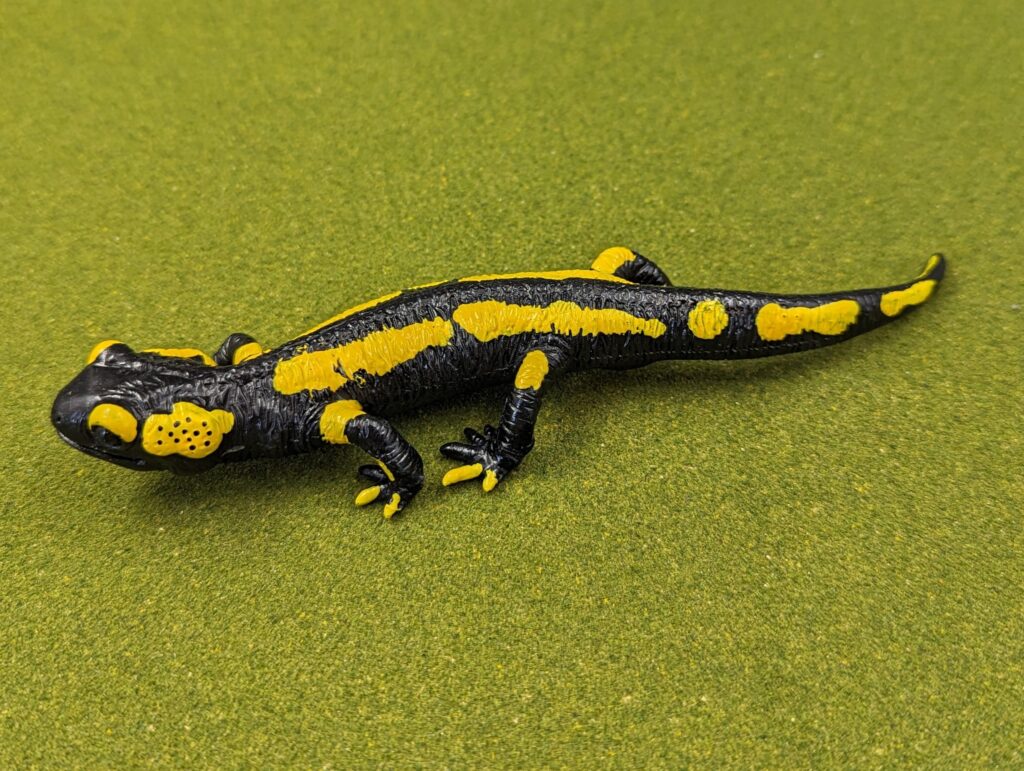
Overall, this is an incredibly small figure of a fire salamander, and is indicative of the expected quality of the series. It should be noted that, given the overall size scale and larger size, these figures are often kind of thought of as reminiscent of the current Incredible Creatures series (indeed, that is where the reissued sculpts showed up). But, the material they are made of is much more solid than the usual IC figures, with very minimal flexibility and are cast as solid, not hollow. In many ways, these figures come across more as models or replicas than toys…but amazing figures nonetheless. I look forward to working through the series here!
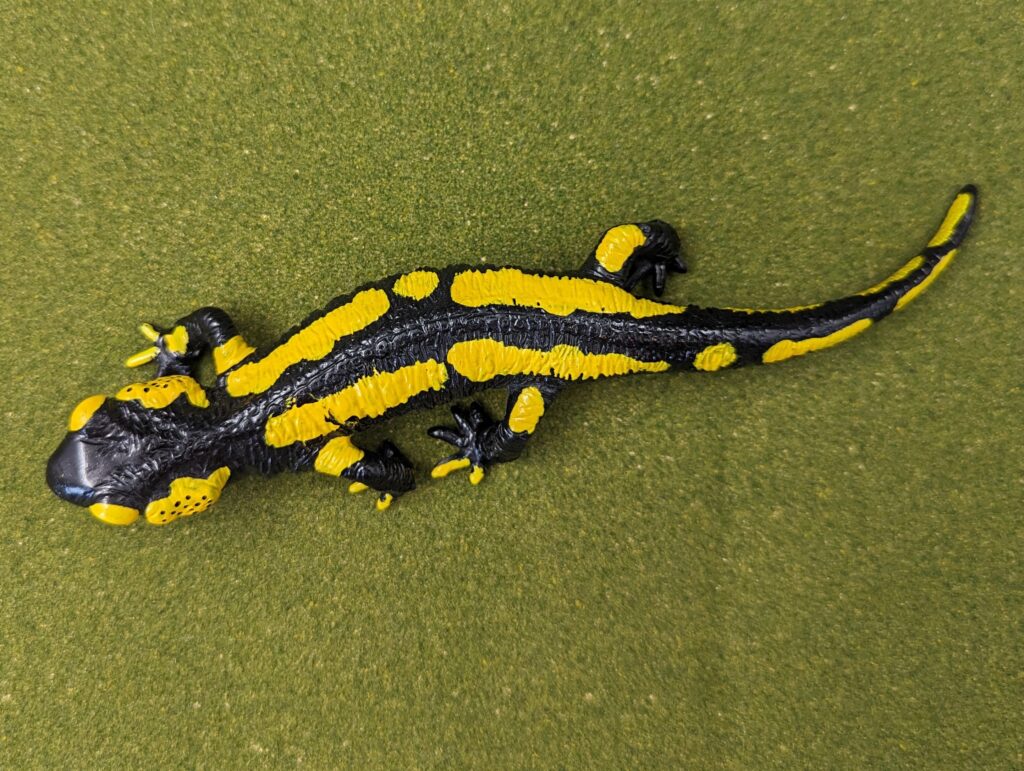
Disclaimer: links to Ebay and Amazon on the AnimalToyBlog are affiliate links, so we make a small commission if you use them. Thanks for supporting us!




Not a comment on the figure itself but rather the Tennessee Aquarium in Chattanooga. It is my FAVORITE aquarium, mainly because it places such an emphasis on freshwater fauna. When I lived in Atlanta, any time I had to go to ‘nooga, I made time to stop by the Aquarium!
I really need to get there. Not especially easy from where I am.
What a beautiful toy! I like fire salamanders. I’m really impressed by the glossy finish and beautiful paintwork.
It’s a truly great figure. The whole series is! I’ll get them all up here eventually!
I did not realize that the Tennessee Aquarium helped produce toys such as this! Love visiting that place.